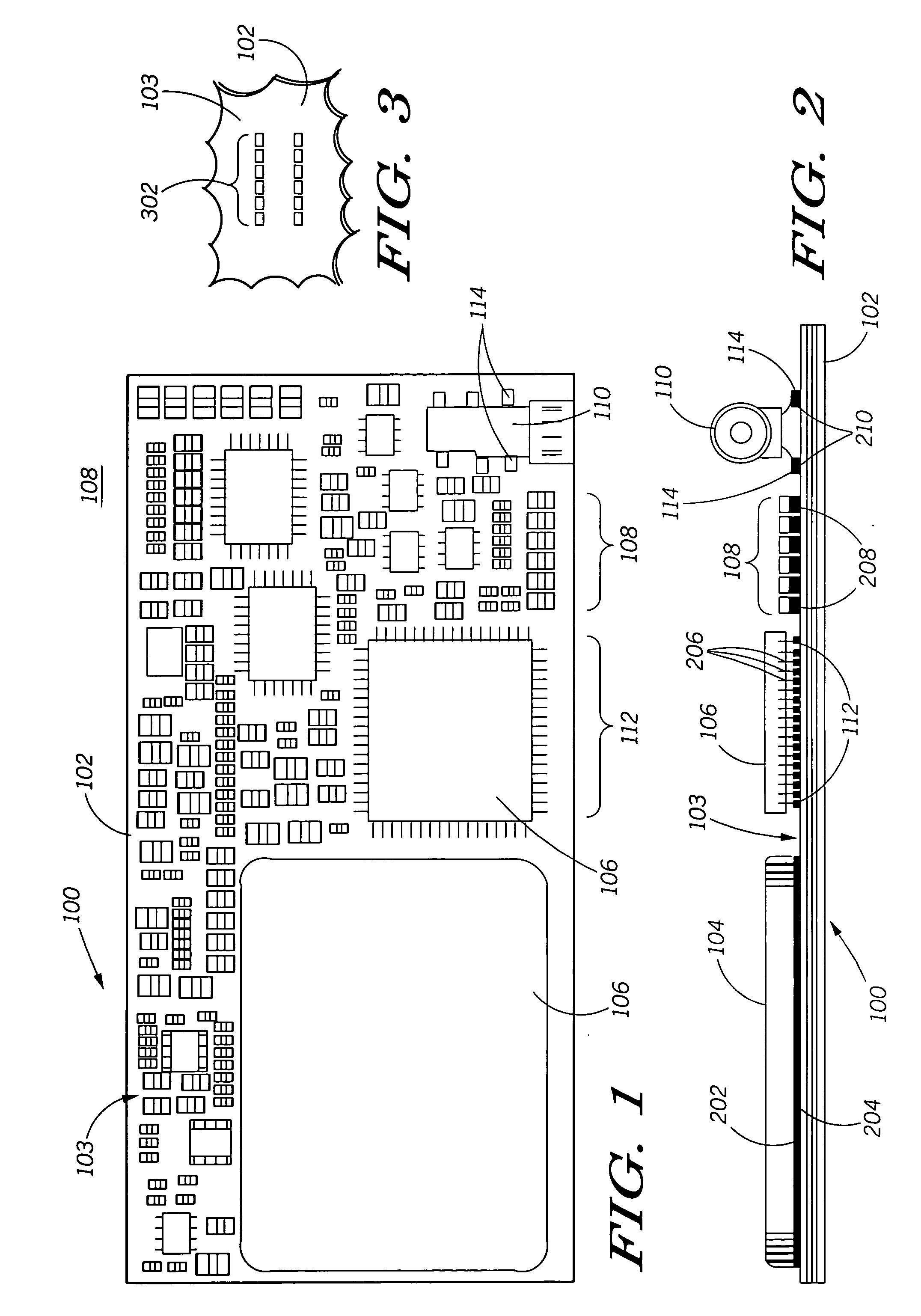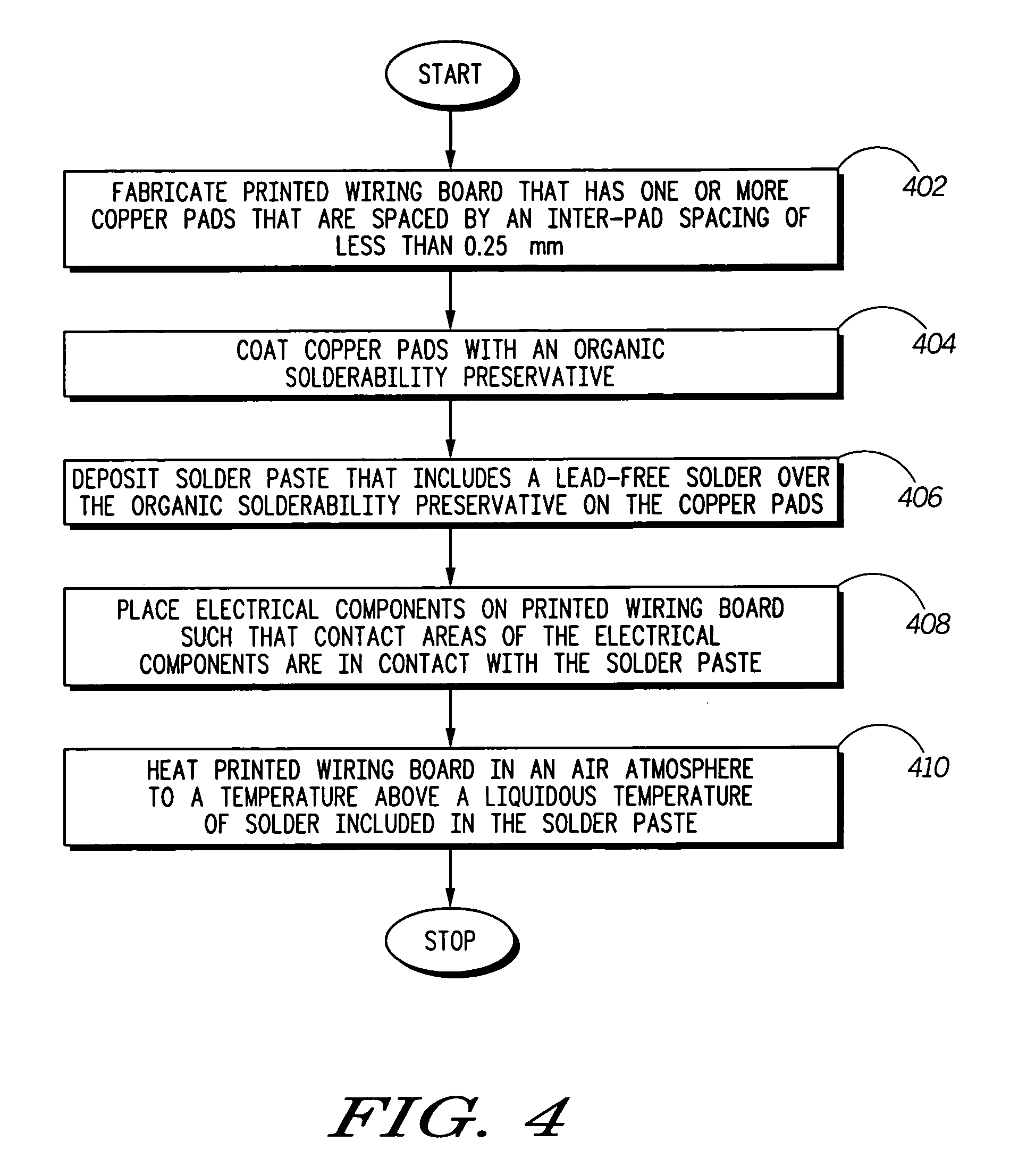Populated printed wiring board and method of manufacture
a printed circuit board and printed circuit board technology, applied in the manufacture of final products, manufacturing tools, electrical apparatus construction details, etc., can solve the problems of conflicting demands on the soldering process, large cost of miniaturizing the microchip, and large external connection requirements of high-integrated microchips
- Summary
- Abstract
- Description
- Claims
- Application Information
AI Technical Summary
Problems solved by technology
Method used
Image
Examples
example
[0042] A second test circuit board 602 shown in FIGS. 7-8 was fabricated. The second test PWB included the same arrays of pads as the first test circuit board. Pads of the second test PWB were coated with Entek OSP. A 5 mill (0.127 mm) thick stencil was used to apply a solder paste that included a solder comprising 95.5 tin, 3.8% silver and 0.7% copper, and a RMA solder flux to the pads of the second test PWB. After application of the solder paste, surface mount resistors were placed on the second test PWB. The second PWB was then heated in an air atmosphere, up to a temperature of 235 C. During the heating a temperature above 217 C was maintained for 70 seconds. The second test PWB was then allowed to cool and the state of the solder joints and discrete components was examined. As shown in FIGS. 7-8, no solder bridges formed, and the surface mount resistor stayed in position.
[0043]FIG. 9 is a sectional side view of a cellular telephone 900 incorporating the populated PWB 100 shown...
PUM
| Property | Measurement | Unit |
|---|---|---|
| Length | aaaaa | aaaaa |
| Length | aaaaa | aaaaa |
| Fraction | aaaaa | aaaaa |
Abstract
Description
Claims
Application Information
 Login to View More
Login to View More - R&D
- Intellectual Property
- Life Sciences
- Materials
- Tech Scout
- Unparalleled Data Quality
- Higher Quality Content
- 60% Fewer Hallucinations
Browse by: Latest US Patents, China's latest patents, Technical Efficacy Thesaurus, Application Domain, Technology Topic, Popular Technical Reports.
© 2025 PatSnap. All rights reserved.Legal|Privacy policy|Modern Slavery Act Transparency Statement|Sitemap|About US| Contact US: help@patsnap.com



